#Islamic Heraldry
Text

His Royal Majesty Ampun Sultan Hadji Muedzul-Lail Tan Kiram, 35th Sultan of Sulu and North Borneo, Grand Sayyid of the Royal Order of the Pearl, Head of the Royal House of Sulu.

#Sultan of Sulu#Royal House of Sulu#philippines#sulu#heraldry#Islamic Heraldry#Filipino Heraldry#Tausug#Muedzul Lail Tan Kiram#Sultanate of Sulu#Hashemite#Kiram#Kiram Dynasty#Indigenous Philippines#sayyid#datu#raja#royalty#traditional ruler
0 notes
Text
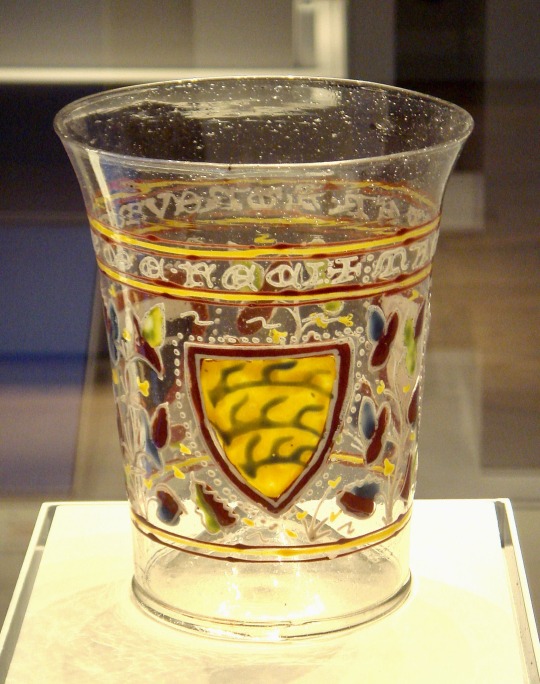
Glass breaker with enamel decoration derived from Islamic technique and style, Italian (Venice), ca. 1330
4 notes
·
View notes
Text
what if i post all my orr headcanons in one or two comprehensive longposts completely with a few sketches or even full illustrations
#kenegalle speaks idk#no because i have SO MANY#esp about fashion; iconography; heraldry or lack thereof; architecture; man so many fucking topics#bringing me back to my days in interior design where i did so much fucking research on Moroccan arch and fashion#+ how muslim immigration during the expansion of the ottoman empire brought so much beautiful arch#+ i always have to do research on what irl culture/ethnicities videogames base things off#and since ive heard orr might be influenced by persian or pre-islamic arabia-#-i have definitely gone to town with aesthetics and fashion while tsking liberties with things like the half-circle archways and doors#....all these tags couldve been in the post itself huh#BAHHAHAHAHAHA if anyone sees this ypu saw nothing
5 notes
·
View notes
Text
Nandhini's Legacy AU : Family Masterlist
A directory for all the Magical families that have a role in my Tamil!Potters AU titled Nandhini's Legacy
Nandhini's Descendants
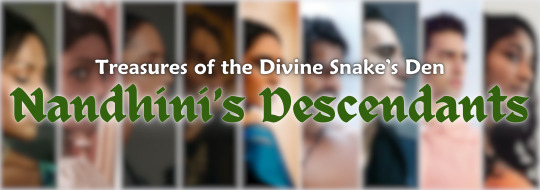
Status: Extant
House Words: The Forests Answer to Us
Residence: House of Serpents (Western Ghats, Tamil Nadu, India); Nagaraja Hall (Gloucestershire, England)
Insignia: Cobra (Lotus Eater), cow, elephant
Colour/s: Green and gold
Head/s: Nithila, daughter of Aathirai (Main); Lily Potter (British branch); ████████ (Italian branch)
A South Asian Magical family from Tamil Nadu, with known branches in the United Kingdom and Italy. The main branch in Tamil Nadu do not carry surnames but as a collective they refer to themselves as Nandhini's descendants or Aditya's descendants. The United Kingdom branch carries the surname Potter. There is little information on the Italian branch. Should the main branch members find themselves in need of a surname for whatever reason, they have their pick of either Nandhini, Aditya, or Potter.
They are known for their unique variant of Parseltongue, commonly known as Potter's Parseltongue in the western world, and their unique connection with snakes. Their estates are known to house an extremely rare type of Magical snake called the Lotus Eater cobra, which appears in their heraldry.
The British branch is also known for their contributions to the country's Potions field and their work in the Magical ceramics industry.
The title of the Head and Heir of the family is primarily passed down the female line but only in secret. In the eyes of the public and the law, they practice patrilineal primogeniture like most other families. This specifically stems from old survival tactics of their ancestors but in the present day, the practice is continued out of respect and fondness of tradition.
They are known to rarely marry outside their South Asian circles, if at all. Regulus Potter ne Black is the first person who is not of South Asian descent to have successfully married into the family.
Through marriage, they are connected to the House of Black.
Notable members: Harry Potter, James Potter, Lily Potter (nee Evans), Regulus Potter (ne Black), Nithila, Lathishri, Kadhir, Iniyan
More information on the family
More information on members (Harry Potter, Lily Evans Potter, others TBP)
The House of Black

Status: Extant
House Words: Toujours pur (Always pure); Birthed by Shadows, Thrive in Darkness
Residence: 12 Grimmauld Place (Borough of Islington, London)
Insignia: Hawk, three crows
Colour/s: Black and maroon
Head/s: ████████ (Main); Sirius Black (British branch)
An ancient and powerful family whose earliest ancestor has been said to have lived as early as pre-Islamic Arabia. According to their own members, the family donned the surname of Black because their ancestors survived and thrived in the shadows of great kingdoms and empires.
In the present time, it said that the House of Black is so massive that their influential reach spans from North Africa all the way to West Asia. Smaller branches have left Asia and Africa and have settled somewhere else in the globe. One of the most notable branches would be their British branch which consists of at least three sub-branches. They are primarily known for their natural talent and extensive knowledge and use of Mind Magic, as well as their open usage and mastery of the Dark Arts.
Despite their fame and influence, little is actually known about the House of Black as a whole. Individual branch seats, heads and members are known, but the House's main seat and head remain a mystery even to the most prolific information hunters in the underground market.
The family's British branch is considered to be one of the country's Sacred Twenty-Eight. The British branch as at least three known sub-branches. The head British branch is historically Egyptian while the other two known sub-branches are historically Levantine (Palestinian) and Persian. The British branch is also notable for their tradition of naming their members after various objects in the night sky, from constellations to stars to natural satellites.
Famously, they rejected Dark Lord Voldemort's offer of allegiance in his first campaign. Orion Black, the Head at the time, has been reported to have told him that their family has "seen more formidable and competent Dark Lords back in the day". However, the family also did not make any moves to stop the Dark Lord's campaign either.
Like the other pureblood families, they generally refused to marry non-purebloods.
Through marriage, they are connected to the Potter family, the Lestrange family, and the Malfoy family, among other families.
Notable members: Sirius Black, Regulus Potter (ne Black), Andromeda Tonks (nee Black; estranged), Bellatrix Lestrange (nee Black), Narcissa Malfoy (nee Black)
More information on the family (TBP)
More information on members (TBP)
Maison Malfoyenne

Status: Extant
House Words: Sanctimonia Vincet Semper (Purity Will Always Conquer); Mountains Bow to River Rapids
Residence: Château de Port du Rhin (Port du Rhin, Strasbourg, France); Nadder Court (Wilton, Wiltshire, England)
Insignia: Mute swan, serpent
Colour/s: Blue and green
Head/s: Cassian Malfoy (Main); Lucius Malfoy (British branch)
A French magical family who trace their origins back to Strasbourg, France and Rhineland-Palatinate, Germany. Historically and traditionally, they are a family of lawmakers, judges, and politicians. Their main branch in Strasbourg is noted to have a hand at shaping the French Magical Parliament to what it is today and members of the family continue to hold significant power in the Magical Parliament themselves.
This tradition continues with the British branch of the family. Armand Malfoy established himself as a pillar of the early Magical British community shortly after arriving in the country and receiving land and a title from King William I. His descendants would go on to become notable members of the governing bodies of the time. The family has produced a certain number of Chief Warlocks and a couple of Supreme Mugwump candidates.
The family has a fondness for establishing their family estates nearby rivers. The main family seat of Château de Port du Rhin is located near the River Rhine, while the British seat of Nadder Court is located near the River Nadder. They are also known for their mastery of water magic.
In the Dark Lord Voldemort's first campaign, Lucius Malfoy had joined the ranks of his Death Eaters but soon defected once his then-fiancee and current wife Narcissa Malfoy nee Black made him choose between her or the Dark Lord.
The Malfoy branch of the family was listed as part of the Sacred Twenty-Eight. Like the other pureblood families, they generally refused to marry non-purebloods.
Through marriage, they are connected to the House of Black, the Lestrange family, and the Lovegood family, among other families.
Notable members: Lucius Malfoy, Narcissa Malfoy (nee Black), Draco Malfoy, Pandora Lovegood (nee Malfoy), Xenophilius Lovegood, Luna Lovegood
More information on the family (TBP)
More information on members (TBP)
Clan Weasley

Status: Extant
House Words: Roots Run Deep
Residence: The Burrow (Ottery St Catchpole, Devon, West Country, England)
Insignia: Rowan, oak
Colour/s: Orange and green
Head/s: Arthur Weasley
Historically a Scottish Highlands Pureblood clan, the Weasleys used to be protectors of a Magical part of the Caledonian Forest before they were driven out of their ancestral home around the time when the local Pureblood clan leaders were forced to hand over their authority to the growing power of the British Ministry of Magic. The Weasleys' portion of the Caledonian Forest was handed over to wandmakers under the Ministry and the Weasleys themselves were forced to relocate further and further away from their ancestral home until they settled in Devon.
The Weasleys' current residence is in Ottery St Catchpole where many of their relatives have also settled. Though they don't have the same power and strength they used to have, they were able to smuggle some saplings from their ancestral home and they have been caring for the trees that grew from those saplings in the years since.
Their Magic is closely tied to the earth and the trees they take care of. Many of them eventually end up in careers where they work closely with wood (carpenters, carvers, broom makers, Quidditch players) or the earth and the creatures that dwell in and on the earth (agriculturists, all sorts of animal caretakers, etc.)
They are also known to have fairly large family units, with their main branch currently having seven children in the youngest generation.
Notable members: Arthur Weasley, Molly Weasley (nee Prewett), William Weasley, Charles Weasley, Percy Weasley, Fred Weasley, George Weasley, Ronald Weasley, Ginevra Weasley
More information on the family (TBP)
More information on members (TBP)
The Park Clan

Status: Extant
House Words: Beware the Spider
Residence: Sangju Park Clan Ancestral Home (Hamchang-eup, Sangju, North Gyeongsang Province, South Korea); Sangjeon Pavilion (Staffordshire Moorlands, Staffordshire, England)
Insignia: Fox, star, spider
Colour/s: White and blue
Head/s: Park Ho-Jung (Main); Aloysius Parkinson (British branch)
[WIP]
Notable members: Aloysius Parkinson, Primrose Parkinson, Pansy Parkinson
More information on the family (TBP)
More information on members (TBP)
#harry potter#harry potter au#mine : nandhinis legacy au#mine : au#tamil potter family#harry james potter#james potter#lily evans potter#jily#jegulily#regulus black#house of black#sirius black#andromeda tonks#bellatrix lestrange#narcissa malfoy#lucius malfoy#draco malfoy#malfoy family#xenophilius lovegood#pandora lovegood#luna lovegood#weasley family#arthur weasley#molly weasley#bill weasley#charlie weasley#percy weasley#fred weasley#george weasley
10 notes
·
View notes
Text
they also put the dragon’s peak bannorn heraldry in here despite the fact that nobody in the world has ever cared about the dragon’s peak bannorn. the symbol is inexplicably similar to the islamic star and crescent. i don’t remotely have a point to make abt that at all i’m really just baffled
#im assuming the wiki list is correct which is even more bizarre because like#they dont even give u gwaren...#when its totally possible for ur character to be the teyrn of gwaren??#im only mad abt this bc the gwaren heraldry fucks to be clear#okay theres no redcliffe this cannot be right
19 notes
·
View notes
Text

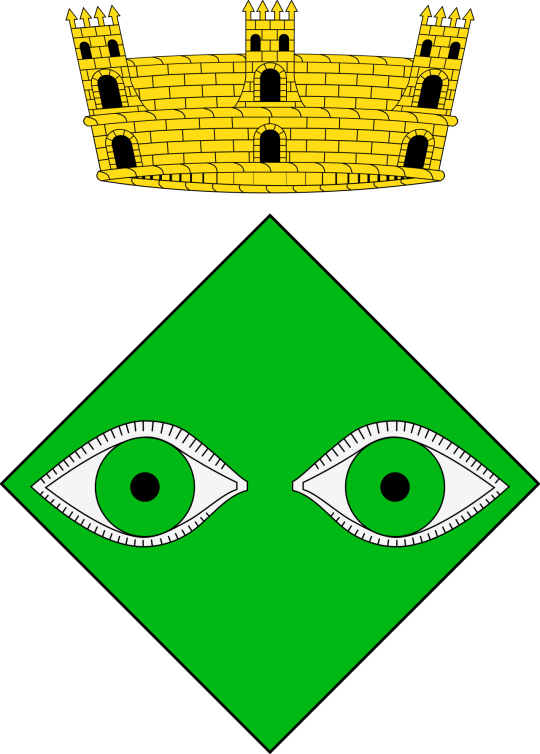
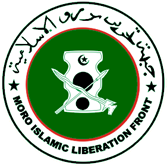
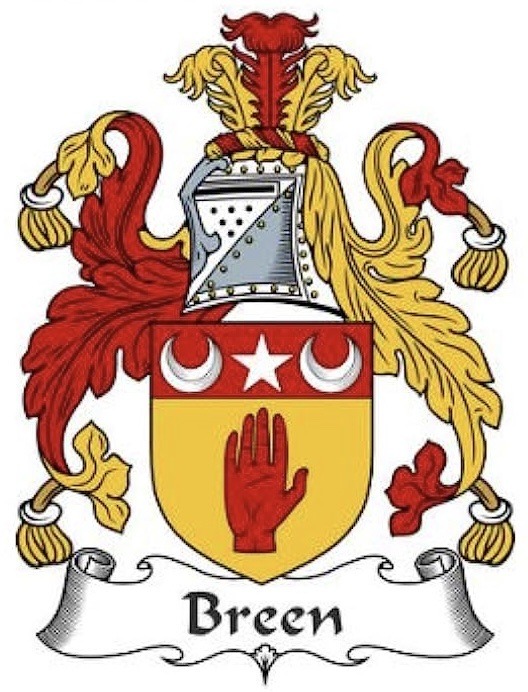
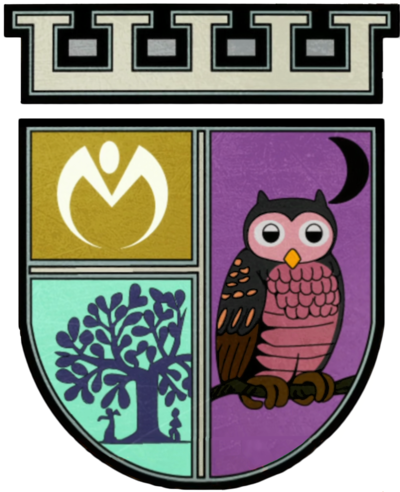
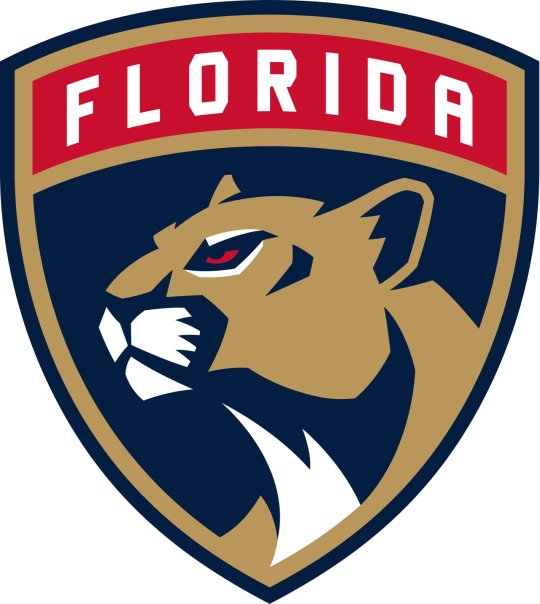



Heraldry and Emblem Wars Prelims
9 notes
·
View notes
Text


Title: Red and Blue in the Crusades: A Symbolic Journey of Good vs. Evil
The Crusades, a series of religious and military campaigns in the medieval period, were marked by a complex tapestry of ideologies, clashes of cultures, and fervent religious zeal. Amid this tumultuous history, the colors red and blue emerged as potent symbols that underscored the narrative of good versus evil.
The Heraldry of Red and Blue:
In the heraldic world of medieval Europe, colors held significant meaning. The Crusader orders and noble families, with their distinctive coats of arms and banners, prominently featured red and blue. The Knights Templar adopted a striking red cross on a white background, while the Hospitallers sported a white cross on a red field. These colors were more than just aesthetic choices; they embodied the identity of these orders and their righteous cause.
Red and Blue as Symbols of Faith:
Red, symbolising martyrdom and the blood shed in the name of Christianity, stood as a testament to the Crusaders' unwavering commitment to their faith. Blue, conversely, represented purity and divinity, evoking the presence of the divine in their mission and drawing a connection to the Virgin Mary's celestial blue robe.
A Clash of Cultures Visualised:
The use of red and blue also highlighted the stark contrast between the Crusaders and their Muslim opponents. Red, as the color of the Crusaders' Christian identity, often contrasted with the green associated with Islam. This visual opposition served to underscore the deep religious and cultural divisions of the time.
Good vs. Evil Dichotomy:
In the eyes of the Crusaders, their use of red and blue reinforced the binary narrative of good versus evil. They saw themselves as defenders of Christianity and civilisation, symbolised by the celestial blue. Their adversaries, characterised as heathens and evildoers, were often depicted in red or other dark colours, further emphasising the moral divide.
The Evolution of Color Symbolism:
Throughout the various Crusades and over time, the symbolism of these colors evolved. Different campaigns and changing circumstances led to nuanced interpretations of red and blue. Other colors may have gained significance in later Crusades, reflecting the evolving nature of this centuries-long conflict.
Modern Interpretations:
Even today, the symbolic significance of red and blue in the context of the Crusades continues to influence our perceptions. These colors still resonate in discussions of religion, culture, and conflict. They serve as a reminder of the enduring impact of this historical period on our understanding of good and evil.
In the annals of history, the Crusades stand as a testament to the power of symbolism. The colors red and blue, once mere hues on shields and banners, have left an indelible mark on the historical narrative, reminding us of the complex interplay between faith, culture, and the eternal struggle between good and evil.
1 note
·
View note
Text
Holidays 6.10
Holidays
AA Day
Abolition Day (French Guiana)
Army Day (Jordan)
Ballpoint Pen Day
Cow Appreciation Day
Day of Camões (Portugal)
Empathy Day (UK)
Festival of the Forgotten
Founder’s Day (AA)
Go Fly A Kite Day
International Day Against Drug Abuse & Illicit Trafficking
International Heraldry Day
Jesus Day (Declared in Texas by George W. Bush in 2000)
Lidice Memorial Day (Czech Republic, Slovakia, New Jersey)
Mourn For Your Money Day
Mylar Balloon Day
National Bed Bug Prevention Day
National EHS Awareness Day
National Yo-Yo Day
Navy Day (Italy)
Portugal Day (Canada, UK, Portugal)
Race Unity Day
Reconciliation Day (Republic of the Congo)
Sabitri Amabasya (Odisha, India)
Senior Race Day (Isle of Man)
Tornado Day
Where the Wild Things Are Day
World Art Nouveau Day
Food & Drink Celebrations
Herbs and Spices Day
National Black Cow Day
National Drink Ohio Wines Day
National Egg Roll Day
National Iced Tea Day
Second Friday in June
Banana Split Day (Ohio) [2nd Friday]
Kamehameha Day (Hawaii) [June 11, Unless a Weekend, then Friday before]
National Day of Prayer for Law Enforcement Officers [2nd Friday]
National Lemonade Days begin [2nd Friday]
National Marriage Day [2nd Friday]
National Movie Night [2nd Friday]
Poultry Days begin (Versailles, Ohio) [2nd Friday]
Red Earth Native American Cultural Festival begins (Oklahoma) [2nd Friday thru Sunday]
Feast Days
Bardo (Christian; Saint)
Bernard (Positivist; Saint)
Brigid of Ireland (Christian; Saint)
Getulius, Amancius and Cerealus (Christian; Martyrs)
Guan Sheng Di Jun Dan (Taoism)
Guardian Angel of Portugal (Christian; Saint)
Henry (or Rigo) of Treviso (Christian; Saint)
Jim Jones Day (Church of the SubGenius; Saint)
John of Tobolsk (Russian Orthodox Church)
Landry of Paris (a.k.a. Landericus; Christian; Saint)
Margaret, Queen of Scotland (Christian; Saint)
Maurinus of Cologne (Christian; Saint)
Maximus of Aveia (or of Aquila; Christian; Saint)
Maximus of Naples (Christian; Saint)
Olivia (Christian; Saint)
Lucky & Unlucky Days
Butsumetsu (仏滅 Japan) [Unlucky all day.]
Dismal Day (Unlucky or Evil Day; Medieval Europe; 11 of 24)
Egyptian Day (Unlucky Day; Middle Ages Europe) [11 of 24]
Fatal Day (Pagan) [11 of 24]
Fortunate Day (Pagan) [21 of 53]
Unlucky Day (Grafton’s Manual of 1565) [31 of 60]
Premieres
Tristan und Isolde, by Richard Wagner (Opera; 1865)
Women in Love (Novel; 1921)
Today is Also…
Day of Year: Day 161 of 2022; 204 days remaining in the year
ISO: Day 5 of week 23 of 2022
Celtic Tree Calendar: Duir (Oak) [Day 1 of 28]
Chinese: Month 5 (Púyuè), Day 12 (Jia-Wu)
Chinese Year of the: Tiger (until January 22, 2023)
Hebrew: 11 Sivan 5782
Islamic: 10 Dhu al-Qada 1443
J Cal: 11 Sol; Threesday [11 of 30]
Julian: 28 May 2022
Moon: 77% Waxing Gibbous
Positivist: 21 St. Paul (6th Month) [Bernard]
Runic Half Month: Odal (Home, Possession) [Day 14 of 15]
Season: Spring (Day 80 of 90)
Zodiac: Gemini (Day 20 of 30)
Calendar Changes
Duir (Oak) [Celtic Tree Calendar; Month 6 of 13]
0 notes
Text
Holidays 6.10
Holidays
AA Day
Abolition Day (French Guiana)
Army Day (Jordan)
Ballpoint Pen Day
Cow Appreciation Day
Day of Camões (Portugal)
Empathy Day (UK)
Festival of the Forgotten
Founder’s Day (AA)
Go Fly A Kite Day
International Day Against Drug Abuse & Illicit Trafficking
International Heraldry Day
Jesus Day (Declared in Texas by George W. Bush in 2000)
Lidice Memorial Day (Czech Republic, Slovakia, New Jersey)
Mourn For Your Money Day
Mylar Balloon Day
National Bed Bug Prevention Day
National EHS Awareness Day
National Yo-Yo Day
Navy Day (Italy)
Portugal Day (Canada, UK, Portugal)
Race Unity Day
Reconciliation Day (Republic of the Congo)
Sabitri Amabasya (Odisha, India)
Senior Race Day (Isle of Man)
Tornado Day
Where the Wild Things Are Day
World Art Nouveau Day
Food & Drink Celebrations
Herbs and Spices Day
National Black Cow Day
National Drink Ohio Wines Day
National Egg Roll Day
National Iced Tea Day
Second Friday in June
Banana Split Day (Ohio) [2nd Friday]
Kamehameha Day (Hawaii) [June 11, Unless a Weekend, then Friday before]
National Day of Prayer for Law Enforcement Officers [2nd Friday]
National Lemonade Days begin [2nd Friday]
National Marriage Day [2nd Friday]
National Movie Night [2nd Friday]
Poultry Days begin (Versailles, Ohio) [2nd Friday]
Red Earth Native American Cultural Festival begins (Oklahoma) [2nd Friday thru Sunday]
Feast Days
Bardo (Christian; Saint)
Bernard (Positivist; Saint)
Brigid of Ireland (Christian; Saint)
Getulius, Amancius and Cerealus (Christian; Martyrs)
Guan Sheng Di Jun Dan (Taoism)
Guardian Angel of Portugal (Christian; Saint)
Henry (or Rigo) of Treviso (Christian; Saint)
Jim Jones Day (Church of the SubGenius; Saint)
John of Tobolsk (Russian Orthodox Church)
Landry of Paris (a.k.a. Landericus; Christian; Saint)
Margaret, Queen of Scotland (Christian; Saint)
Maurinus of Cologne (Christian; Saint)
Maximus of Aveia (or of Aquila; Christian; Saint)
Maximus of Naples (Christian; Saint)
Olivia (Christian; Saint)
Lucky & Unlucky Days
Butsumetsu (仏滅 Japan) [Unlucky all day.]
Dismal Day (Unlucky or Evil Day; Medieval Europe; 11 of 24)
Egyptian Day (Unlucky Day; Middle Ages Europe) [11 of 24]
Fatal Day (Pagan) [11 of 24]
Fortunate Day (Pagan) [21 of 53]
Unlucky Day (Grafton’s Manual of 1565) [31 of 60]
Premieres
Tristan und Isolde, by Richard Wagner (Opera; 1865)
Women in Love (Novel; 1921)
Today is Also…
Day of Year: Day 161 of 2022; 204 days remaining in the year
ISO: Day 5 of week 23 of 2022
Celtic Tree Calendar: Duir (Oak) [Day 1 of 28]
Chinese: Month 5 (Púyuè), Day 12 (Jia-Wu)
Chinese Year of the: Tiger (until January 22, 2023)
Hebrew: 11 Sivan 5782
Islamic: 10 Dhu al-Qada 1443
J Cal: 11 Sol; Threesday [11 of 30]
Julian: 28 May 2022
Moon: 77% Waxing Gibbous
Positivist: 21 St. Paul (6th Month) [Bernard]
Runic Half Month: Odal (Home, Possession) [Day 14 of 15]
Season: Spring (Day 80 of 90)
Zodiac: Gemini (Day 20 of 30)
Calendar Changes
Duir (Oak) [Celtic Tree Calendar; Month 6 of 13]
0 notes
Text
I like to imagine that when Nicolò di Genoa became a knight, he chose green and silver for his colours. Heraldic colours served as a kind of nametag. Each of the 1,300 knights who rolled up to Jerusalem in 1099 had their own distinct heraldic branding, not just on their shield, but on their clothing, servants, and possessions.
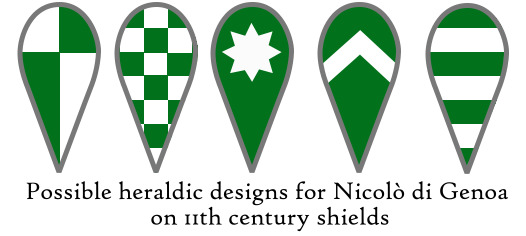
Green’s a lovely colour. You don’t see a lot of green in post-Crusade medieval European heraldry. That’s because when the European army arrived at Jerusalem in 1099, according to European reports, the flags flying above Jerusalem were green with a black crescent and star. Green has special significance in Islam; it’s associated with Paradise in the Qur’an. The Christians attacking Jerusalem assumed green was “the colour of Islam”.
So after the Siege of Jerusalem, green suddenly dropped to the absolute bottom of everyone’s Favourite Heraldic Colours. Green was the colour of The Enemy. If your shield is green, you’d better go find some paint. It took nearly 400 years for green to see a comeback in Western iconography.
So I think it’s pretty fitting for Nicky to have chosen, years before, to wear a colour that gives the mild impression that he’s affiliated with Jerusalem’s defenders, not its attackers.
(Also it matches Nile’s big fight scene jacket, and how can I resist that.)
266 notes
·
View notes
Photo
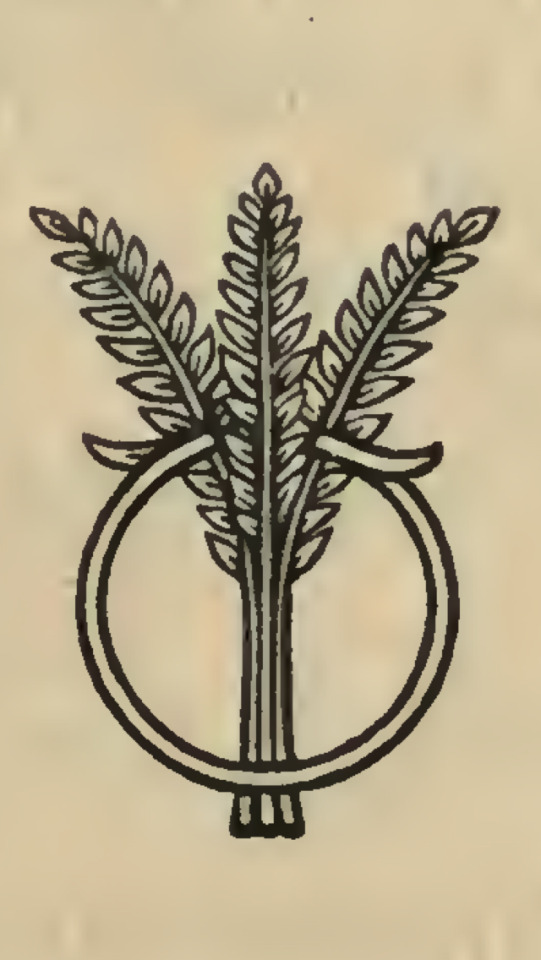
Heraldry and symbolism geeks, can you help me with this particular image? It's a vignette from a 1907 book based on the Thousand and One Nights, and I've seen it pop up elsewhere in such contexts. I think it's palm leaves rather than laurels, but I guess it could be either. It's *supposed* to be medieval Islamic (and used in Persian contexts), but it's incredibly hard to find any information through Googling. If anyone knows more (and not just explanations of what knots and palms and laurels symbolise--I know all that) and could quote me a definite source, I'd be grateful.
ETA: now that I’ve uploaded the image, GISing brings up clipart of wheat, so I guess it’s wheat. It might just be a random Victorian vignette, so I’m not at all convinced it’s Islamic in origin. But it bugs me, dammit.
#heraldry#help?#i'd appreciate reblogs on this one#it might not be islamic at all#but i seem to remember having seen it in#thief of bagdad#as well#so what were the designers of that one consulting?#also big dave if you're reading this i know you are tempted to guess but i want something definite
8 notes
·
View notes
Text
King Bahamond’s heraldry and its basis in Egerton NS 3028
So I was thinking of how I could do flags in my own work and how anachronising crests was already in Med. Lit.
To demonstrate crests in Arthuriana here are details from Egerton MS 3028, 2nd quarter of the 14th century... (http://www.bl.uk/manuscripts/FullDisplay.aspx?ref=Egerton_MS_3028) I did get some illustrations from here (http://www.bl.uk/catalogues/illuminatedmanuscripts/record.asp?MSID=6654&CollID=28&NStart=3028).
I may of course be forcing some of the comparisons but it’s interesting.
Aurelius and Eldof, Earl of Gloucester, bearing the crests of England and Gloucester.

For comparison...
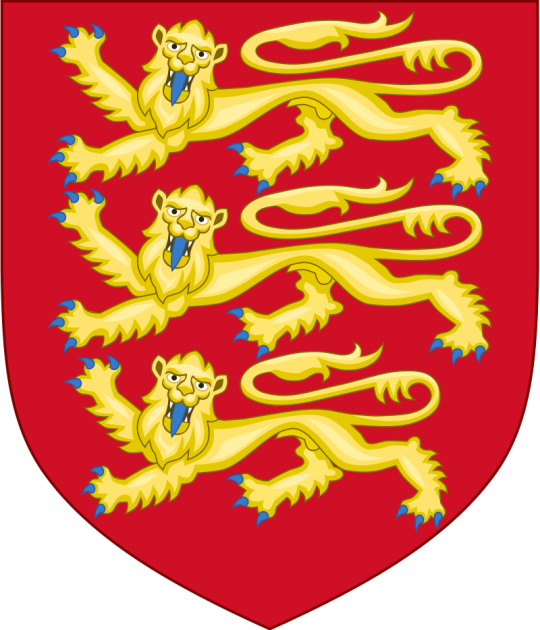
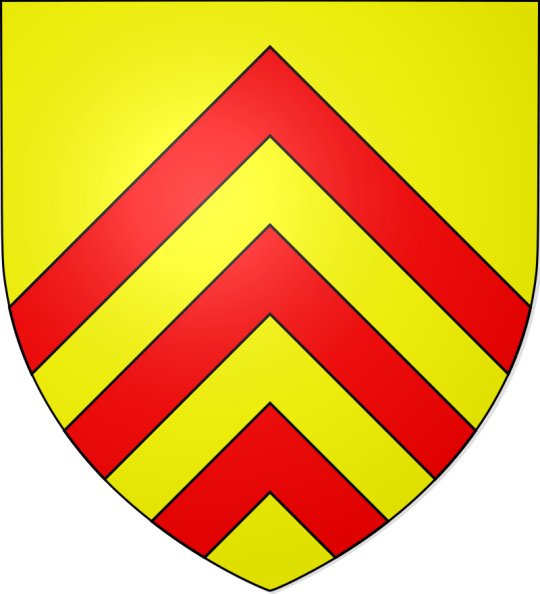
Not sure of last but Gorlois was apparently at battle and among Cornish coats of arms is similar-looking Westlake arms, who were documented in period of this manuscript. (http://www.4crests.com/westlake-coat-of-arms.html)

Here we have Arthur and Aguisel, the King of Scotland, using crests more resembling current England and Scotland, while Lucius’ eagle is probably meant to invoke the Holy Roman Empire.

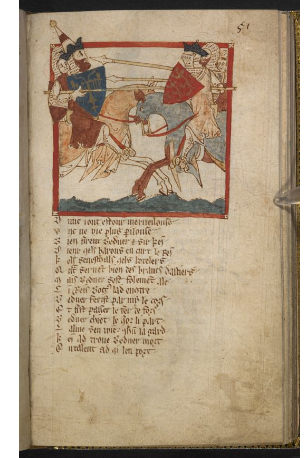
Again...

At the time the Holy Roman Empire didn’t use this golden eagle on blue but it did use something like that.
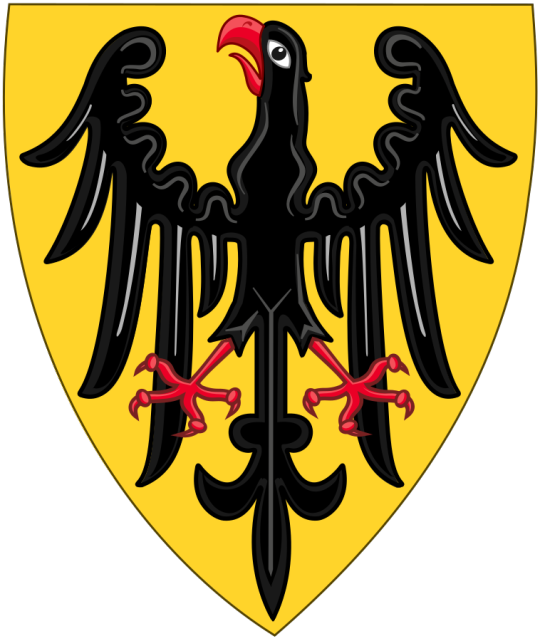
This is kept with in text, with the Alliterative having Ewain say:
I shall aunter me ones his egle to touch
That borne is in his banner of bright gold rich (359-360)
And I do know that makes Lucius...

Now we have Laban, the Sultan of Babylon, Charlemagne while fighting him carries the Fleur-de-lis. Laban and his son Fierenbras for some reason use a gold lion on blue.




Here are the arms of France’s Royal House, the Fleur-de-lis.

I had a bit of trouble finding images for the lions (or leopards, I know they are sometimes referred to as leopards if unrampant) on red which are also in the image of Charlemagne.
The Lions on blue... well "The very first recorded mention of a coat of arms in British history was the one presented by Henry I to his new son-in-law, Geoffrey of Anjou, a Frenchman who had just married his daughter Matilda. It is recorded that Henry hung a shield around Geoffrey’s neck with 6 upright gold lions with red claws and tongues, on an azure background. In heraldic language this would be described as “Azure, six lions rampant, Or, three, two and one, armed and langued gules.” (Gules = red; armed and langued = showing claws and tongue).” (https://www.highlandtitles.com/blog/heraldry-history-and-language/)
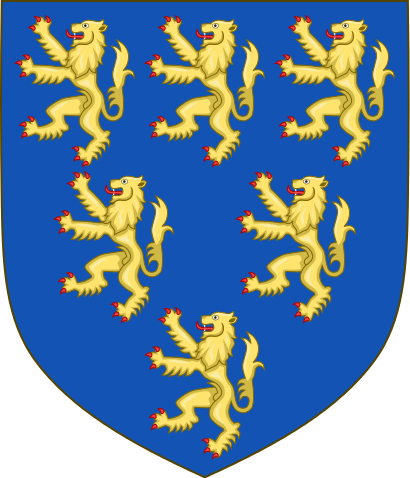
Apparently the first proven coat of arms for an English monarch were Henry II (according to this https://www.fleurdelis.com/royalcoatofarms.htm), which were later changed to the three lions.

Does look a bit like Lannister sigil.
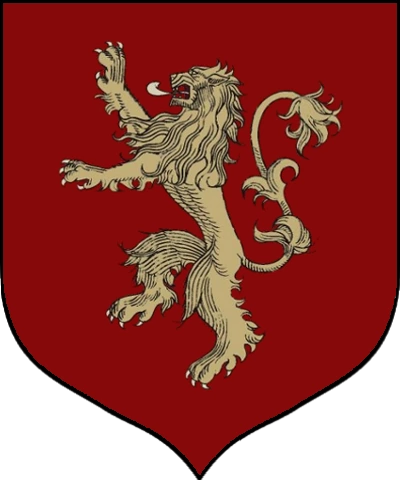
The one lion passant guardant was Aquitaine coat of arms.

I did find something else talking about how the British coat of arms evolved from one lion to three. Apparently “ The ‘Lion’ has been a symbol of ‘England’ since the 11th century during the rule of the Normans, and was featured on early versions of the English Coat of Arms. During this period only one lion was illustrated on a red background (which symbolised a red battlefield – even the Normans were art critics at heart).” (http://www.downwithdesign.com/logo-design/three-lions-the-history-of-an-emblem/)

Aquitaine had one lion, Henry II had two, so when he married Eleanor, Duchess of Aquitaine, they were joined to three lions, still used today.
Finally Arthur and Frollo, Gaul’s tribune.

Fun fact, in later Arthurian Lit. Frollo would be allied with Claudas.

Therefore it would make sense for me to invoke the modern day with arms.
So what am I doing? As the Franks that take control of Spain are partially based on Franco’s regime their leader King Bahamond could have something like this crest. Well there is Franco’s coat of arms.

Franco’s personal coat of arms in case you didn’t realise he was the bad guy.
Might just be two golden dragons.
Dragons do appear in Alliterative with Lucius’ forces.
He drawes into douce Fraunce, as Dutch-men telles,
Dressed with his dragons, dredful to shew;
and later
Then this rich man rathe arrayes his bernes,
Rewled his Romans and real knightes;
Buskes in the avauntward the Viscount of Rome;
Fro Viterbo to Venice these valiant knightes
Dresses up dredfully the dragon of gold,
With egles all over enamelled of sable
The Welsh King challenges a Viscount...
Then the viscount, valiant, with a voice noble
Avoided the avauntward, enveround his horse;
He dressed in a derf sheld, endented with sable,
With a dragon engoushed, dredful to shew,
Devourand a dolphin with doleful lates,
In sign that our soveraign sholde be destroyed,
And all done of dayes, with dintes of swordes,
For there is nought but dede there the dragon is raised!
If I want to be alliterative I might even give mention of a Dragon Duke David, reference to KKK member and Trump supporter (OK, that is redundant) David Duke.
So Bahamond will likely have double dragons, is the conclusion.
And likely his Muslim foes will have different flags due to Islamic prescription on aniconism.
@cukibola @epic-summaries @blackcur-rants
10 notes
·
View notes
Photo



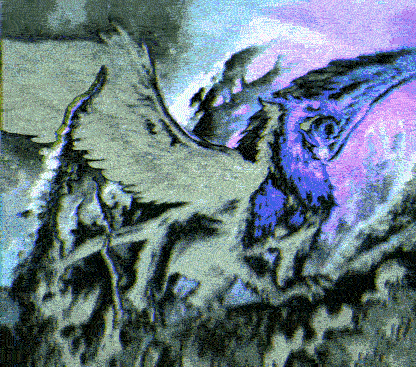
Griffin
What is a Griffin?
A griffin (or gryphon) is a chimeric creature, part eagle and part lion. With incredible strength, unfailing protective instincts, and a zero-tolerance policy against evil, it is the superhero of mythological creatures. No villain can mess with the griffin!
Characteristics
Physical Description
Griffins combined the best traits from the eagle (“king of the birds”) and the lion (“king of the beasts”). Their heads come from the eagle; they are coated in glossy feathers, usually brown or golden, and have dangerous, curved beaks. Two tufts of feathers spring up from their heads, representing a lion’s ears. At their shoulders, a pair of powerful, feathered wings emerge. Behind the wings, the feathers fade into tawny fur, and the lion’s body takes over. These beasts are usually drawn with the front legs of an eagle and the back legs of a lion, but sometimes, all four legs are lion-like.
Personality
The griffin is hailed as “the king of all creatures,” and it is has the right personality for its title: noble, fearsome, and above all else, protective. It will fight to the death to keep evil and corruption out of its territory. In some cases, the griffin’s “territory” might be a precious object, or even a living creature, rather than a piece of land. They are well-known for guarding treasures, sacred sites, and royal families. Their loyalty can also be seen in their mating habits; they choose only one mate for their whole lives, and if that mate dies, they spend the rest of their days alone.
Special Abilities
As you can probably imagine, the griffin is a terrible enemy in a fight. It has all the strength of a lion, and it can launch aerial attacks! Ancient historians claimed that this creature preyed on elephants and giraffes—so it made short work of human intruders.
The griffin’s mighty body has magical properties as well. Alchemists and early physicians prized the beast’s claws and feathers, which could restore sight to the blind. Griffin eggs were also valuable. They were made into goblets and drinking from them was said to prolong life.
Finally, the griffin has an eye for shiny objects, especially gold. It likes to nest in rocky areas where seams of gold can be found, and nuggets of gold can be found scattered around its nest.
Cultural Representation
Origin
The first griffins crop up as sculptures in ancient Egypt and Iran, around 3000 BC. Much later, the “king of all creatures” melded into Greek culture. Frescos from the 1400 BC show the beast guarding Greek palaces. Later, Greek natural historians, including Pliny the Elder, attempted to describe the griffin’s form, habitat, and behavior. Eventually, the Greeks passed the griffin along to the Romans, who spread its legend throughout Europe. Meanwhile, the eastern cultures who first dreamt up the griffin spread its legend to surrounding areas, including India and Syria.
Medieval Lore
No medieval bestiary was complete without the griffin, king of all creatures. It was highly popular, both as a symbol and as a real creature, who could contribute to scientific advancement.
Both Christians and Muslims seized upon the griffin as a religious symbol. Christians used the bird to reinforce Christ’s mandate against marriage, since the noble bird was said to mate for life. Griffins were often carved into churches, and in Dante’s Divine Comedy griffins were stationed at the entrance to paradise, guarding it from evildoers. Meanwhile, the Muslim poet Rumi used griffins as symbols of Islamic virtue, and Muslim artists created the “Pisa Griffin,” the largest bronze statue to be made during Medieval times.
Individuals also claimed the griffin as their own personal symbol. It was extremely popular in heraldry, representing strength and bravery.
Alchemists and physicians bought up “griffin” claws, feathers, and eggs to be used in experiments. In reality, these were usually antelope horns, eagle feathers, and ostrich eggs.
Modern Appearances
Today, the griffin has been surrendered to the realm of fantasy, but it is still a popular figure there! The Percy JacksonI series, the Spiderwick Chronicles, and the Harry Potter series all welcome griffins into their cast of characters. Games like World of Warcraft and Dungeons and Dragons also allow players to test their skills against the mighty griffin!
#occult#mythology#dark#gore#trippy#obscure#evil#creature#legendary#witchcraft#magic#folklore#greek#vaporwave#aesthetic#monster#lore#alchemy#blackandwhite#rgb#photooftheday#haunted#creepy#scary#lost#history#dead#nature#animals#fable
7 notes
·
View notes
Text
How to Draw a Star Step by Step

The five sharp stars have been utilized as a symbol throughout the globe, covering the millennia of the human world and also going across cultural limits. In its most general use, the star stands for the heavens, the evening sky, and celestial spaces. Easy to draw a braids can be on this site!
In medieval Europe, the star was used to represent power, authority, and heraldry. Various faiths also utilize the 5 pointed stars, consisting of Islam, the Bahá' í confidence, and the Serrer religion of West Africa, along with numerous army departments, non-religious cultures, sports teams, and organizations.
Would certainly you like to discover to draw a flawlessly in proportion, five directed star? Now you can, by following this very easy, detailed illustration tutorial.
To attract your star, you will require a paper as well as a writing implement, such as a pen, pencil, or marker. You might additionally wish to use colored pencils, markers, or crayons to color your finished illustration. Having a good eraser and also a straight side ruler handy is also recommended.
Each action in this drawing overview is gone along with by a pictorial picture. In each image, new lines added in that action are highlighted in blue; previously draw lines are shown in black. You will likely wish to draw gently at first, as you will undoubtedly be eliminating some of your original lines as you accompany.
If you liked this tutorial, see likewise the complying with illustration overviews: Angel Wings, Fire, as well as Skull.
You don't require any unique art supplies to attract this tutorial, but you can sustain Easy Illustration Guides by buying through the complying.
Excellent, inexpensive paper to draw on or an illustration pad to take with you on your journeys.
Bright, simple to blend colored pencils or less costly oil pastels.
Pencil set to exercise illustration and also shielding along with a plastic or worked eraser, as well as a sharpener. If you draw a lot with pencils, you could also obtain an electrical sharpener.
Exactly How to Attract Star: Action 1

To begin, draw a square. You may want to make use of a leader to ensure straight lines and also appropriate angles.
Exactly How to Attract Star: Step 2

Draw a vertical line down the middle of the square. From the same point, draw the line on each side of the very first. These lines will fulfill the bottom of the square in between the very first line and also the square's sides.
Exactly How to Attract Star: Step 3

Draw a straight, horizontal line across the middle of the square. From each end of this line, expand a straight line downward and in the direction of the facility straight line. These lines will undoubtedly satisfy the vertical line midway in between the straight line as well as the all-time low of the square.
How to Attract Star: Step 4

From the factor where the previous lines converged, attract two even more lines. These lines will meet the all-time low of the square at the same point as the nearly straight lines.
Exactly How to Attract Star: Step 5

From the star's bottom two factors, attract two straight lines that will undoubtedly merge at the star's facility.
Exactly How to Attract Star: Tip 6

From the celebrity's two side factors, draw two straight lines that assemble at the celebrity's center.
Exactly How to Attract Star: Action 7

Attract straight lines from each point of the indoor upside-down pentagon to the star's facility.
How to Attract Star: Tip 8
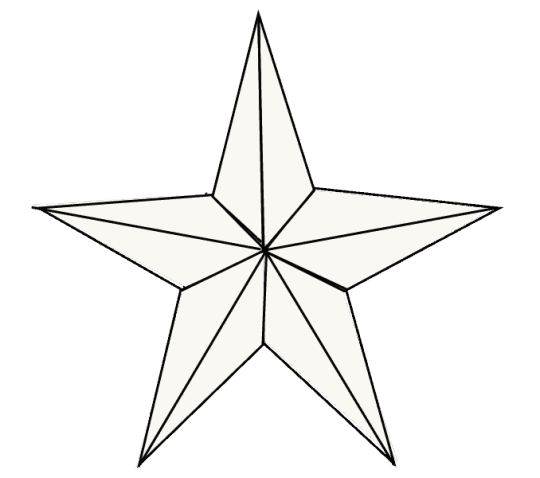
Erase the overview lines-- both those within the celebrity and the original square.
How to Draw Star: Tip 9

Shade your star. Using two various shades to color the celebrity in a rotating pattern will enhance the celebrity's three-dimensional impact
1 note
·
View note
Note
hey! i hope you're both having a nice day. i'm looking for some names that were popular-ish around the 10th-15th century, but all i can find are english names from that period. do you have any websites or resources to help with finding names from older time periods that are not exclusively english? thank you!
https://www.s-gabriel.org/names/ - Medical Names Archive - Arabic, Persian, Turkish,
Islamic, Central Asian, Ancient Iranian, Mongolian, Indian, Chinese, Japanese, and Mexican!
http://rivenvale.org/heraldry/name-lists/ - Shire of Rivenvale - Asian, Jewish, Middle Eastern!
http://heraldry.sca.org/names.html - SCA Heraldry - Society for Creative Anachronism - Asian, Middle Eastern and Jewish!
More links:
http://www.peiraeuspubliclibrary.com/names/asia/china.html - China!
If anyone has any additions please message us and the list will be updated! -C
11 notes
·
View notes
Text
The horse
The horse Pets
The horse has been a domesticated animal since 4000 BC. Horse demand spread around 3000 BC The horse's body structure has given it the ability to accelerate the enemy, to strike at balance, and to fight or flee in the face of danger. The horse can both stand and sleep on the side. Horses live about 25 to 30 years. In ancient times, horses were used in warfare. The Mongols were well-versed in horseback riding.
Festival-- Horse dances are performed every year on the Chaitra full moon in Odisha by horse. This is a traditional folk dance of Odisha.
Relationships with humans --- Horses have played an important role in human society around the world. Horses are used in entertainment, sports and other activities.
Sports-- Horses play a variety of games, such as polo, slow jumping, and so on. Horse racing is still a popular sport. Gambling is practiced on most horse races.
Entertainment-- Horses are used mainly for entertainment in movies, serials, and historical sites. Legends have also been found in legends of different religions, such as Hinduism, Islam, and Greco-Romanism. Modern horses are used to rebuild many of their historic works. Horses are used, complete with equipment that is authentic or re-imagined with care, with various live works from a particular time in history reacting historically, especially in the entertainment of famous wars. Horses are also used to preserve cultural traditions and for official purposes. Countries like the United Kingdom use horse-drawn carriages to transport royalties and other VIPs to some culturally significant events. The public exhibition is another example, as shown in the parade of Budweiser Clydesdales, a team of draft horses that pulls a beer wagon similar to the one used before the invention of the modern motor-driven truck. Horses are frequently used in television, film, and literature They are sometimes featured in a film about specific creatures, but are also used as visual elements to ensure the accuracy of the historical story. The advertisement uses symbols of both living horses and horses to promote various animals. Horses are frequently seen in heraldry, in various poses and equipment In many cultures, including the Greco-Roman, Hindu, Islamic, and nursing, myths refer to both the common horse and the person with wings or extra limbs, and multiple myths also call for the horse to draw the chariot of the moon and the sun. The horse is also seen in the 12-year cycle of animals in the zodiac sign associated with the Chinese calendar. Do the work There are certain things that horses do very well, and so far no technology has been developed to completely replace them. For example, mounted police horses are effective for some sort of patrol duty and crowd control. Cattle ranchers need horse riders who need to graze cattle in remote, remote areas. In some countries, search and rescue agencies rely on climbing teams to find people, especially pedestrians and children, and provide disaster relief assistance. For fine soils such as nature conservation, vehicle disruptions need to be avoided where horses can also be used. It may also be the only form of transportation allowed in desert areas The horse is quieter than a motor vehicle Law enforcement officers such as park rangers or game warden can use horses for patrolling, and horses or mules can also be used to clean trawls where vehicles are less efficient. Although the machine has replaced horses in many parts of the world, about 100 million horses, donkeys and mules are being used for agriculture and transportation in less developed areas. Of that number, about 27 million are in Africa alone. Some land management practices, such as farming and logging, can be performed effectively In agriculture, less fossil fuels are used and environmental protection increases with the use of draft animals such as horses. Planting with a horse can reduce the damage to the soil structure and cause less damage to the tree due to the more selected timber.
1 note
·
View note